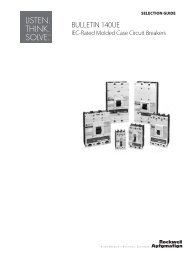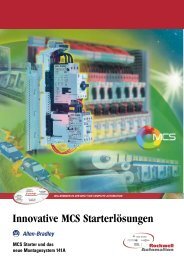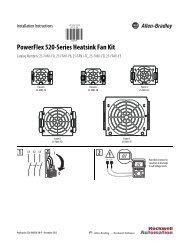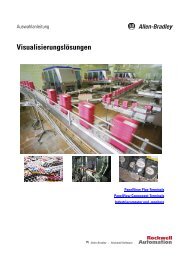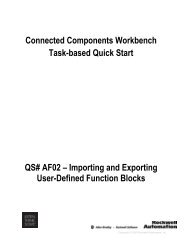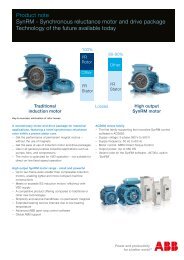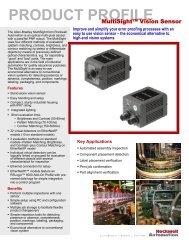Temperature Controller - Staveb AG
Temperature Controller - Staveb AG
Temperature Controller - Staveb AG
- No tags were found...
Create successful ePaper yourself
Turn your PDF publications into a flip-book with our unique Google optimized e-Paper software.
Parameter Adjustments and Application Considerations 4-3• The input temperature range of non-contact temperature sensors can beshifted by setting an individual value for the upper and lower end pointsof the sensor range. This means that the shift can be applied equallyacross the range with separate values for each end of the range. Forexample, if the upper-limit value is set to 2°C and the lower-limit value isset to 1°C, the sensor range is shifted by an average of 1.5°C at 50%input.• Set the upper-limit value in the Upper-Limit <strong>Temperature</strong> Input ShiftValue parameter and the lower-limit value in the Lower-Limit<strong>Temperature</strong> Input Shift Value parameter.Figure 4.8 Two-Point Shift<strong>Temperature</strong> Upper-limit temperature input shift valueUpper-limitvalueAfter shiftBefore shiftLower-limit value0Lower-limit temperatureinput shift value100InputHow to Calculate Input Shift Values (2-Point Shift)When a non-contact temperature sensor (for example, OMRON ES1Asensor) is connected to the Bulletin 900-TC32, an offset of several degrees toseveral tenths of a degree can occur. For this reason, it may be desirable tooffset the readout value by 1-point or 2-point shift as described here.Note: 2-point shift can be carried out only on non-contact temperaturesensors, and cannot be set for other input types.Preparations1. Set to the temperature range matching the input specifications of thenon-contact temperature sensor (see Table A.B, List of Input Types). Thenon-contact infrared sensor is supported only in thermocouple inputtype Bulletin 900-TC32 controllers. (See Table 1.A.)Publication 900-UM003C-EN-E - January 2004



